Apply for CA19141 iNEAL 2nd Working Groups meeting!
October 11th – 12th 2021, Eberhard Karls University of Tübingen, Tübingen, Germany
Deadline for application: September 9th 2021
COST Action Integrating Neandertal Legacy: From Past to Present – iNEAL (CA19141) will hold its 2nd Working Groups meeting at the Eberhard Karls University of Tübingen, Tübingen, Germany from October 11th – 12th 2021. We want to thank our Action member and WG1 Leader, prof. Katerina Harvati from the Eberhard Karls University of Tübingen, for acting as a local organizer of the meeting. To apply, please fill out the application form and send it to Ivor Janković (ivor.jankovic@inantro.hr), Stefano Benazzi (stefano.benazzi@unibo.it) and Morana Jarec (morana.jarec@inantro.hr), no later than September 9th 2021. The decision will be sent to all applicants before September 17th 2021, including further instructions for successful applicants.
Current information regarding coronavirus
Please note that this notice is informative and it might change closer to the event, depending on the number of COVID-19 cases and the decisions of the country/University. It is a participant’s obligation to inform themselves on relevant and up-to-date information regarding entering Germany and University Tübingen.
Participants of the events organized at the University Tübingen will be required to show:
1. Certificate of vaccination
or
2. Certificate of illness with COVID-19 in the last 6 months
or
3. A negative official antigen test no older than 24 hours (for each day of the event a new test)
Existing rules of the University Tübingen:
1. Full compliance with the university’s hygiene concept as amended at the time of the events, including – according to the current status of the concept – compliance with the distance, mask, ventilation and contact data collection regulations (see the form at the end of the hygiene concept). Participation in events without a mask is only possible if there is a permanent and reliable distance of 1.5 metres to the next person. Lecturers must maintain a distance of 3 metres; the same applies to forced conversations between participants. These requirements also apply to those who have been vaccinated or have recovered, as the legislator or ordinance does not privilege them in the context of activities or stays at the university. The University’s current hygiene concept can be found on the homepage at https://uni-tuebingen.de/universitaet/infos-zum-coronavirus/.
2. 3G applies to every course. Students as well as lecturers must prove that they have either been vaccinated or have recovered, or present a negative test that is no more than 24 hours old. 3G also applies to all participants in other events such as symposia etc. with the participation of external persons. For events outside of teaching, the distance of 1.5 metres must be maintained – in this case as an occupational health and safety measure for the state’s employees.
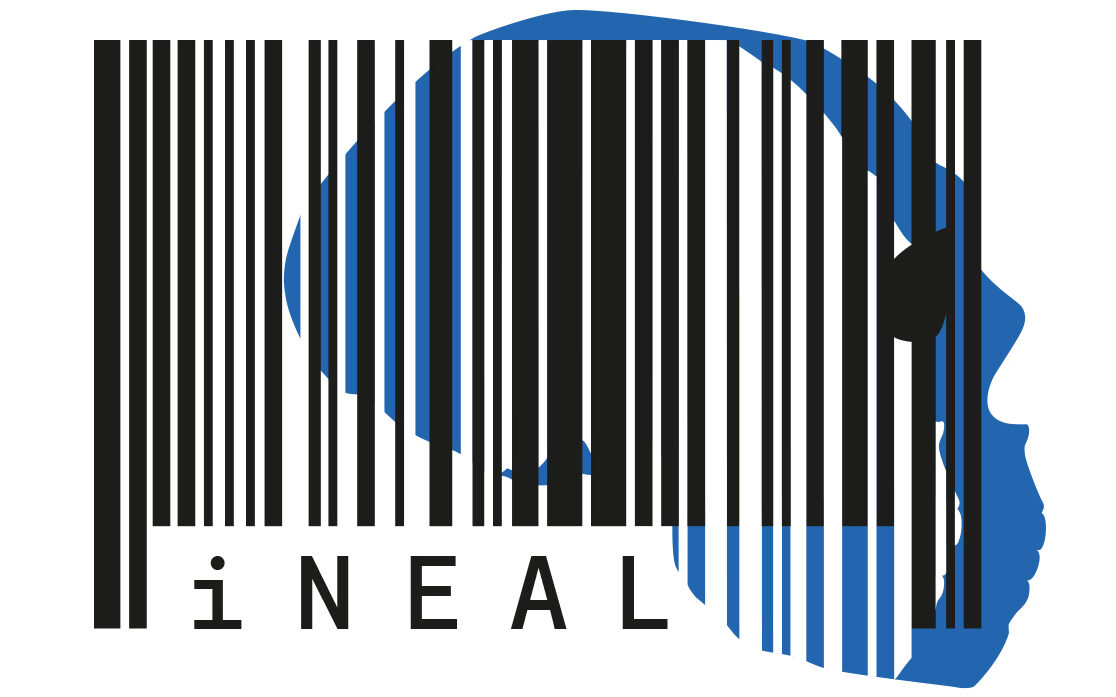

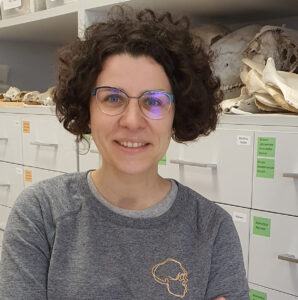
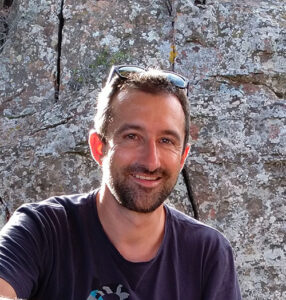 Dr Florent Rivals graduated in Biology at the University Paul Sabatier in Toulouse, and received PhD in Prehistory from the University of Perpignan in 2002. In 2004, he completed a postdoc at the American Museum of Natural History and in 2005, he was awarded a fellowship from the Humboldt Foundation at the Universität Hamburg (Germany). Dr. Rivals was appointed ICREA Junior Researcher (2007 to 2012) at the Institut Català de Paleoecologia Humana i Evolució Social and since 2013, he is ICREA Research Professor at the same institution. He is principal investigator of a coordinated research project on Neanderthal behaviour and paleoecology in the Mediterranean ecosystems funded by the Spanish Ministry of Science and Innovation. He also participates in various national and international projects related to Neanderthal paleoecology. His primary research interest is in evolutionary paleoecology and the ecological context of evolution. The analysis of mammalian fauna from Pleistocene sites provides the framework for studying the evolution of hominins. His research focuses on the impact of climate-driven environmental changes on hominins, and Neanderthals in particular. Examining mammal teeth, such as bison, deer, horse and mammoth, under a microscope and looking at the marks left by the food they ate (known as the last supper phenomenon), provides insight into the habitats they roamed just before they died. The changes in diet over thousands of years are used to reconstruct ancient environments, to track shifts related to climatic changes, and to understand hominin behavioural strategies in different ecological settings. Beyond Western Europe, his research is also focussing on the Near East.
Dr Florent Rivals graduated in Biology at the University Paul Sabatier in Toulouse, and received PhD in Prehistory from the University of Perpignan in 2002. In 2004, he completed a postdoc at the American Museum of Natural History and in 2005, he was awarded a fellowship from the Humboldt Foundation at the Universität Hamburg (Germany). Dr. Rivals was appointed ICREA Junior Researcher (2007 to 2012) at the Institut Català de Paleoecologia Humana i Evolució Social and since 2013, he is ICREA Research Professor at the same institution. He is principal investigator of a coordinated research project on Neanderthal behaviour and paleoecology in the Mediterranean ecosystems funded by the Spanish Ministry of Science and Innovation. He also participates in various national and international projects related to Neanderthal paleoecology. His primary research interest is in evolutionary paleoecology and the ecological context of evolution. The analysis of mammalian fauna from Pleistocene sites provides the framework for studying the evolution of hominins. His research focuses on the impact of climate-driven environmental changes on hominins, and Neanderthals in particular. Examining mammal teeth, such as bison, deer, horse and mammoth, under a microscope and looking at the marks left by the food they ate (known as the last supper phenomenon), provides insight into the habitats they roamed just before they died. The changes in diet over thousands of years are used to reconstruct ancient environments, to track shifts related to climatic changes, and to understand hominin behavioural strategies in different ecological settings. Beyond Western Europe, his research is also focussing on the Near East. Dr Maria Gurova is Senior Researcher and Associate Professor of Prehistory at the National Institute of Archaeology with Museum, Bulgarian Academy of Sciences (NIAM–BAS). She graduated from Sofia University and completed her PhD at the Experiments and Use-wear Analysis Laboratory of the Archaeological institute of St-Petersburg, Russian Academy of Sciences. Subsequently, she was awarded fellowships at CRA/CNRS, Sophia-Antipolis (France); NIAS-Wassenaar (Netherlands); Albright Institute, Jerusalem (Israel); CRF/RSE Edinburgh (UK). She has built her career in the Prehistory Department of NIAM–BAS. Maria Gurova conducts research in Prehistoric Archaeology with a focus on chipped-stone assemblages from Palaeolithic sites in Bulgaria, and more broadly on the Holocene sequences of the Balkans, Anatolia and Southern Levant (raw material, techno-typological and use-wear analysis). She is author/co-author of 215 publications and has contributed to more than 80 international conferences and symposia. She participated in several International Palaeolithic Projects (with CENIEH – Burgos; Albany University – NY, USA; FWO – KU Leuven and RBINS – Brussels, Belgium). Her experience of Palaeolithic fieldwork includes excavations in the caves of Temnata, Kozarnika, Magura and Mishin Kamik (the last mentioned investigated under her scientific direction). Maria Gurova is Editor-in-chief of the open-access Bulgarian e-Journal of Archaeology. In 2019 she received awards from the Web of Science group – for excellence in scientific research, and Clarivate Analytics – for outstanding contribution to global scientific research.
Dr Maria Gurova is Senior Researcher and Associate Professor of Prehistory at the National Institute of Archaeology with Museum, Bulgarian Academy of Sciences (NIAM–BAS). She graduated from Sofia University and completed her PhD at the Experiments and Use-wear Analysis Laboratory of the Archaeological institute of St-Petersburg, Russian Academy of Sciences. Subsequently, she was awarded fellowships at CRA/CNRS, Sophia-Antipolis (France); NIAS-Wassenaar (Netherlands); Albright Institute, Jerusalem (Israel); CRF/RSE Edinburgh (UK). She has built her career in the Prehistory Department of NIAM–BAS. Maria Gurova conducts research in Prehistoric Archaeology with a focus on chipped-stone assemblages from Palaeolithic sites in Bulgaria, and more broadly on the Holocene sequences of the Balkans, Anatolia and Southern Levant (raw material, techno-typological and use-wear analysis). She is author/co-author of 215 publications and has contributed to more than 80 international conferences and symposia. She participated in several International Palaeolithic Projects (with CENIEH – Burgos; Albany University – NY, USA; FWO – KU Leuven and RBINS – Brussels, Belgium). Her experience of Palaeolithic fieldwork includes excavations in the caves of Temnata, Kozarnika, Magura and Mishin Kamik (the last mentioned investigated under her scientific direction). Maria Gurova is Editor-in-chief of the open-access Bulgarian e-Journal of Archaeology. In 2019 she received awards from the Web of Science group – for excellence in scientific research, and Clarivate Analytics – for outstanding contribution to global scientific research. Johann Galdies is a Maltese palaeontologist who read for a bachelor’s degree in Biology and Chemistry at the University of Malta, where, for his final-year dissertation, he investigated recent pollen deposits in the Maltese garrigue habitat. He later read for a master’s degree in Earth and Planetary Science, specialising in Palaeontology and Palaeoclimatology at the University of Lille, where, for his master’s dissertation, he worked on the geometric morphometrics of Pleistocene bear bones. Johann is currently employed at the University of Malta, where he is working as a Research Support Officer within the Department of Geosciences. His main research interests are vertebrate palaeontology and archaeozoology, palaeoecology, palynology, taxonomy and comparative anatomy.
Johann Galdies is a Maltese palaeontologist who read for a bachelor’s degree in Biology and Chemistry at the University of Malta, where, for his final-year dissertation, he investigated recent pollen deposits in the Maltese garrigue habitat. He later read for a master’s degree in Earth and Planetary Science, specialising in Palaeontology and Palaeoclimatology at the University of Lille, where, for his master’s dissertation, he worked on the geometric morphometrics of Pleistocene bear bones. Johann is currently employed at the University of Malta, where he is working as a Research Support Officer within the Department of Geosciences. His main research interests are vertebrate palaeontology and archaeozoology, palaeoecology, palynology, taxonomy and comparative anatomy. Dr. Ivor Janković is a paleoanthropologist and prehistoric archaeologist at the Institute for Anthropological Research in Zagreb. He is also an adjunct full professor at the Department of Anthropology, University of Wyoming. His main professional interests are human evolution, particularly biological adaptations during the Middle and Late Pleistocene and Palaeolithic archaeology
Dr. Ivor Janković is a paleoanthropologist and prehistoric archaeologist at the Institute for Anthropological Research in Zagreb. He is also an adjunct full professor at the Department of Anthropology, University of Wyoming. His main professional interests are human evolution, particularly biological adaptations during the Middle and Late Pleistocene and Palaeolithic archaeology
 Ľubomíra Kaminská is an archaeologist at Institute of Archaeology of Slovak Academy of Sciences, at the Department in Košice, with a focus on the field excavations, technology of lithic industries and raw material procurement. She deals with the issue of Middle and Upper Palaeolithic in Slovakia. In its research she uses knowledge and experience from several study stays in Germany, Austria, the Czech Republic, France, Hungary and Poland.
Ľubomíra Kaminská is an archaeologist at Institute of Archaeology of Slovak Academy of Sciences, at the Department in Košice, with a focus on the field excavations, technology of lithic industries and raw material procurement. She deals with the issue of Middle and Upper Palaeolithic in Slovakia. In its research she uses knowledge and experience from several study stays in Germany, Austria, the Czech Republic, France, Hungary and Poland. Prof Marco Peresani is Associate Professor at Department of Humanities, University of Ferrara, Italy. Since 1993 Marco Peresani designs and coordinates research projects focused on the human populations of Mediterranean Europe, particularly in the north of Italy and the Alps. The Neanderthal – Anatomically Modern Humans bio-cultural replacement and the Late Glacial and Early Holocene hunter-gatherer settlement dynamics are the main topics he deals with. As an archaeologist and a geoarcheologist, he studies depositional and post-depositional processes and uses lithic technology as a primary research tool. Most relevant investigations have revealed the existence of behavioural variability of the Neanderthals, across the Middle – Upper Palaeolithic Transition and the Upper Palaeolithic up to the Early Mesolithic. His research projects involve numerous sites in the Italian Alps and the Marche Apennines, among which Grotta di Fumane and other sites in Friuli and Veneto with key cultural sedimentary sequences.
Prof Marco Peresani is Associate Professor at Department of Humanities, University of Ferrara, Italy. Since 1993 Marco Peresani designs and coordinates research projects focused on the human populations of Mediterranean Europe, particularly in the north of Italy and the Alps. The Neanderthal – Anatomically Modern Humans bio-cultural replacement and the Late Glacial and Early Holocene hunter-gatherer settlement dynamics are the main topics he deals with. As an archaeologist and a geoarcheologist, he studies depositional and post-depositional processes and uses lithic technology as a primary research tool. Most relevant investigations have revealed the existence of behavioural variability of the Neanderthals, across the Middle – Upper Palaeolithic Transition and the Upper Palaeolithic up to the Early Mesolithic. His research projects involve numerous sites in the Italian Alps and the Marche Apennines, among which Grotta di Fumane and other sites in Friuli and Veneto with key cultural sedimentary sequences. Vangelis Tourloukis (PhD, Leiden University) works as Senior Researcher at the Department of Palaeoanthropology, University of Tübingen. He has a broad training in Prehistoric Archaeology and his research focuses on the Palaeolithic period, lithic technology and geoarchaeology. Vangelis has extensive experience as co-director of field research and lithic analyst in several survey projects and excavations in Greece and Turkey. Since 2012, he is directing the excavations and surveys that take place in the framework of the ERC projects PaGE (2012-2016) and CROSSROADS (2017-2022), where he is responsible for designing the research methodology, coordinating the field and laboratory analyses of the cultural material, and contextualizing the chronological and paleoenvironmental data. In the study of prehistoric cultural remains, Tourloukis investigates the evolutionary dynamics between early human technology, subsistence strategies and environmental settings. His research interests include the evolution of the human niche, the role of technology in early human behaviour, and the socio-economic and ecological contexts of hominin behavioural diversity.
Vangelis Tourloukis (PhD, Leiden University) works as Senior Researcher at the Department of Palaeoanthropology, University of Tübingen. He has a broad training in Prehistoric Archaeology and his research focuses on the Palaeolithic period, lithic technology and geoarchaeology. Vangelis has extensive experience as co-director of field research and lithic analyst in several survey projects and excavations in Greece and Turkey. Since 2012, he is directing the excavations and surveys that take place in the framework of the ERC projects PaGE (2012-2016) and CROSSROADS (2017-2022), where he is responsible for designing the research methodology, coordinating the field and laboratory analyses of the cultural material, and contextualizing the chronological and paleoenvironmental data. In the study of prehistoric cultural remains, Tourloukis investigates the evolutionary dynamics between early human technology, subsistence strategies and environmental settings. His research interests include the evolution of the human niche, the role of technology in early human behaviour, and the socio-economic and ecological contexts of hominin behavioural diversity. Dr. Parisa Göker graduated from Ankara University, Agriculture Faculty, Department of Landscape Architecture. She is full time Associate Professor at Bilecik Şeyh Edebali University in Turkey. Also, she is the Head of Department of Interior architecture and Environment Design. Her researches are about historical and cultural landscape, cultural heritage, historic palace gardens, archaeological landscapes.
Dr. Parisa Göker graduated from Ankara University, Agriculture Faculty, Department of Landscape Architecture. She is full time Associate Professor at Bilecik Şeyh Edebali University in Turkey. Also, she is the Head of Department of Interior architecture and Environment Design. Her researches are about historical and cultural landscape, cultural heritage, historic palace gardens, archaeological landscapes.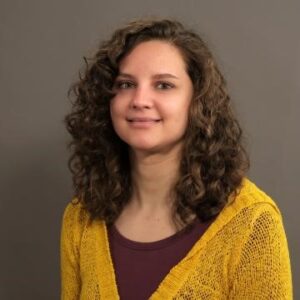 Ms Tamara LESKOVAR is a postdoctoral researcher at the Department of Archaeology and a member of the Council of the Centre for Interdisciplinary Research in Archaeology at the Faculty of Arts, University of Ljubljana, specialised in various types of analysis of skeletal remains, from macroscopic to biomolecular. She completed undergraduate and postgraduate studies in archaeology at the Department of Archaeology, Faculty of Arts, University of Ljubljana. During the postgraduate studies in archaeology in Ljubljana, she received a scholarship from the AHRC (Arts and Humanities Research Council), which enabled her to pursue a Master of Science in Human Osteology and palaeopathology at the University of Bradford (UK) in parallel. While studying at Bradford, she was awarded a project from the Society for the Study of Human Biology (SSHB, UK) researching stable isotopes in human ossicles. For her postdoctoral studies in archaeology, she received a Fulbright scholarship and worked as a visiting scholar at Quinnipiac University in Connecticut (USA). She also received a DAAD scholarship for training in human and animal bone histology at Ludwig Maximilian University in Munich (DE). Since her return to Slovenia in 2017, she has been employed at the Department of Archaeology, Faculty of Arts, University of Ljubljana. She was included into the Humanities in the European Research Area (HERA) project Encounters and Transformations in Iron Age Europe (ENTRANS), and into the Cremation or Inhumation of ancient populations? A Multidisciplinary question at the European level (CRIME) project, performing various analyses of human skeletal remains. She was also included into the project Interreg Iron Age Danube (IAD) for the protection, promotion and tourist use of cultural heritage, and into the project Researchers Night for the promotion and presentation of science to the general public. She is currently working on research and commercial archaeological and anthropological projects, conducting archaeological fieldwork and various macroscopic and microscopic analyses of human remains.
Ms Tamara LESKOVAR is a postdoctoral researcher at the Department of Archaeology and a member of the Council of the Centre for Interdisciplinary Research in Archaeology at the Faculty of Arts, University of Ljubljana, specialised in various types of analysis of skeletal remains, from macroscopic to biomolecular. She completed undergraduate and postgraduate studies in archaeology at the Department of Archaeology, Faculty of Arts, University of Ljubljana. During the postgraduate studies in archaeology in Ljubljana, she received a scholarship from the AHRC (Arts and Humanities Research Council), which enabled her to pursue a Master of Science in Human Osteology and palaeopathology at the University of Bradford (UK) in parallel. While studying at Bradford, she was awarded a project from the Society for the Study of Human Biology (SSHB, UK) researching stable isotopes in human ossicles. For her postdoctoral studies in archaeology, she received a Fulbright scholarship and worked as a visiting scholar at Quinnipiac University in Connecticut (USA). She also received a DAAD scholarship for training in human and animal bone histology at Ludwig Maximilian University in Munich (DE). Since her return to Slovenia in 2017, she has been employed at the Department of Archaeology, Faculty of Arts, University of Ljubljana. She was included into the Humanities in the European Research Area (HERA) project Encounters and Transformations in Iron Age Europe (ENTRANS), and into the Cremation or Inhumation of ancient populations? A Multidisciplinary question at the European level (CRIME) project, performing various analyses of human skeletal remains. She was also included into the project Interreg Iron Age Danube (IAD) for the protection, promotion and tourist use of cultural heritage, and into the project Researchers Night for the promotion and presentation of science to the general public. She is currently working on research and commercial archaeological and anthropological projects, conducting archaeological fieldwork and various macroscopic and microscopic analyses of human remains.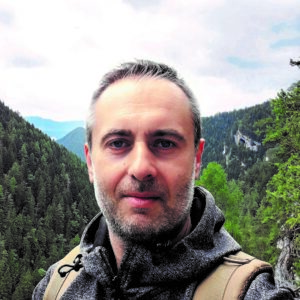 Adrián Nemergut is an archaeologist at the Department of Prehistoric Archaeology at Institute of Archaeology of Slovak Academy of Sciences, with a focus on the field excavations, technology of lithic industries and raw material procurement. He deals with the issue of Middle to Upper Palaeolithic transition in Slovakia, especially in the research of Szeletian, which was probably carried by the last Neanderthals. In research he uses knowledge and experience from several study stays, workshops and field research, e.g. in Belarus, Czech Republic, England, France, Poland and Spain.
Adrián Nemergut is an archaeologist at the Department of Prehistoric Archaeology at Institute of Archaeology of Slovak Academy of Sciences, with a focus on the field excavations, technology of lithic industries and raw material procurement. He deals with the issue of Middle to Upper Palaeolithic transition in Slovakia, especially in the research of Szeletian, which was probably carried by the last Neanderthals. In research he uses knowledge and experience from several study stays, workshops and field research, e.g. in Belarus, Czech Republic, England, France, Poland and Spain. Prof. dr. Paweł Valde-Nowak was born in Cracow (Poland), 24 May 1954. He received in 1979 an M.A. in archaeology from Jagiellonian University in Cracow and Ph. D. in Polish Academy of Sciences in Warsaw in 1986. After habilitation in 1996 in Polish Academy of Sciences, Warsaw, he became Professor title from the Praesident of Poland in 2003. In the years 2003-2005 he worked as the Professor of archaeology in the University of Gdańsk, in the years 2010-2011 as the Professor of archaeology in the University of Cologne, Germany, 2019-2020 University of Hradec Kralove, Czech Republik. Actually he is Professor of Stone Age Archaeology in the Jagiellonian University of Cracow and up to 2015 he was a senior scientist in the Polish Academy of Sciences, Cracow. Pawel Valde-Nowak is a Fellow of Alexander von Humboldt Foundation, Bonn and Academy of Sciences and Literature in Mainz (both Germany) and guest-teacher of archaeology in the University of Tübingen (1999-2000) as well as in Erlangen-Nürnberg University (1992). He is author of over 300 papers, reports and author or editor of 8 books. The main topics in that publications is the Stone Age archaeology, mountainous archaeology, Neanderthal and early Homo Sapiens cave settlement, identification of the role of palynology in the studies of Neolithic time and flint working techniques.
Prof. dr. Paweł Valde-Nowak was born in Cracow (Poland), 24 May 1954. He received in 1979 an M.A. in archaeology from Jagiellonian University in Cracow and Ph. D. in Polish Academy of Sciences in Warsaw in 1986. After habilitation in 1996 in Polish Academy of Sciences, Warsaw, he became Professor title from the Praesident of Poland in 2003. In the years 2003-2005 he worked as the Professor of archaeology in the University of Gdańsk, in the years 2010-2011 as the Professor of archaeology in the University of Cologne, Germany, 2019-2020 University of Hradec Kralove, Czech Republik. Actually he is Professor of Stone Age Archaeology in the Jagiellonian University of Cracow and up to 2015 he was a senior scientist in the Polish Academy of Sciences, Cracow. Pawel Valde-Nowak is a Fellow of Alexander von Humboldt Foundation, Bonn and Academy of Sciences and Literature in Mainz (both Germany) and guest-teacher of archaeology in the University of Tübingen (1999-2000) as well as in Erlangen-Nürnberg University (1992). He is author of over 300 papers, reports and author or editor of 8 books. The main topics in that publications is the Stone Age archaeology, mountainous archaeology, Neanderthal and early Homo Sapiens cave settlement, identification of the role of palynology in the studies of Neolithic time and flint working techniques. Dr. Bärbel Auffermann is the director of Neanderthal Museum in Germany. They are telling the story of human evolution close to the famous discovery site of the first Neanderthal remains.Dr. Auffermann is archaeologist and worked as exhibition manager at Neanderthal Museum since the opening in 1996. She played a decisive role in the conception and realization of visitor-oriented permanent and temporary exhibitions. She is also spokeswoman of Archaeological Museums in the German Museum Association and participate in advisory boards and board of trustees of renowned German museums as well as Ecsite, the European network of science centers and museums. Dr. Auffermann participates in the development of the network Ice Age Europe.
Dr. Bärbel Auffermann is the director of Neanderthal Museum in Germany. They are telling the story of human evolution close to the famous discovery site of the first Neanderthal remains.Dr. Auffermann is archaeologist and worked as exhibition manager at Neanderthal Museum since the opening in 1996. She played a decisive role in the conception and realization of visitor-oriented permanent and temporary exhibitions. She is also spokeswoman of Archaeological Museums in the German Museum Association and participate in advisory boards and board of trustees of renowned German museums as well as Ecsite, the European network of science centers and museums. Dr. Auffermann participates in the development of the network Ice Age Europe. Dr Jean-Luc Voisin is associated to the Aix-Marseille University. Dr. Voisin’s two main research topics are The Neandertal: from dawn to dusk & The shoulder architecture within the Hominoids. The goal of the topic The Neandertal: from dawn to dusk is to understand the Neandertal meta-population as a whole and in its variability across time and space. For example, dr. Voisin has demonstrated that there is an East to West morphological cline, in Neandertal meta-population. Eastward populations display less marked Neandertal traits than their westward counterparts. This might reflect a speciation by distance phenomenon. Neandertal humanity can be fully understood only by taking into account other species like first modern humans in Europe and pre-Neanderthal populations. It is necessary to consider also other contemporaries human populations elsewhere in the world like Homo naledi. Non-European species could help us to understand mechanisms of differentiation and speciation involving modern humans and Neanderthal. Regarding the second topic, the shoulder architecture within the Hominoids, Dr. Voisin has established that there is not one but at least 3 different shoulder architectures within the genus Homo. Those of modern humans and Neandertals are different in many aspects. He is also working on the origin of the shoulder impingement syndrome which becomes very common after 40 years old in our species, which is nearly inexistent in Apes. He has shown that this trouble may affect Neandertals as well as first modern humans but maybe not the Australopithecines.
Dr Jean-Luc Voisin is associated to the Aix-Marseille University. Dr. Voisin’s two main research topics are The Neandertal: from dawn to dusk & The shoulder architecture within the Hominoids. The goal of the topic The Neandertal: from dawn to dusk is to understand the Neandertal meta-population as a whole and in its variability across time and space. For example, dr. Voisin has demonstrated that there is an East to West morphological cline, in Neandertal meta-population. Eastward populations display less marked Neandertal traits than their westward counterparts. This might reflect a speciation by distance phenomenon. Neandertal humanity can be fully understood only by taking into account other species like first modern humans in Europe and pre-Neanderthal populations. It is necessary to consider also other contemporaries human populations elsewhere in the world like Homo naledi. Non-European species could help us to understand mechanisms of differentiation and speciation involving modern humans and Neanderthal. Regarding the second topic, the shoulder architecture within the Hominoids, Dr. Voisin has established that there is not one but at least 3 different shoulder architectures within the genus Homo. Those of modern humans and Neandertals are different in many aspects. He is also working on the origin of the shoulder impingement syndrome which becomes very common after 40 years old in our species, which is nearly inexistent in Apes. He has shown that this trouble may affect Neandertals as well as first modern humans but maybe not the Australopithecines. Trine Kellberg Nielsen, PhD, is Associate Professor at the School of Culture and Society, Department of Archeology and Heritage Studies, Aarhus University, Denmark. Dr. Kellberg Nielsen is a Paleolithic archaeologist and her research focuses on the northernmost range of Neanderthals (Homo neanderthalensis). She is particularly interested in how Neanderthals adapted to the high northern latitudes and in understanding what defines their northern margin of dispersal at various timescales across their vast occupational range.
Trine Kellberg Nielsen, PhD, is Associate Professor at the School of Culture and Society, Department of Archeology and Heritage Studies, Aarhus University, Denmark. Dr. Kellberg Nielsen is a Paleolithic archaeologist and her research focuses on the northernmost range of Neanderthals (Homo neanderthalensis). She is particularly interested in how Neanderthals adapted to the high northern latitudes and in understanding what defines their northern margin of dispersal at various timescales across their vast occupational range.
2 thoughts on “2nd Working Groups meeting Tübingen, Germany”
Comments are closed.